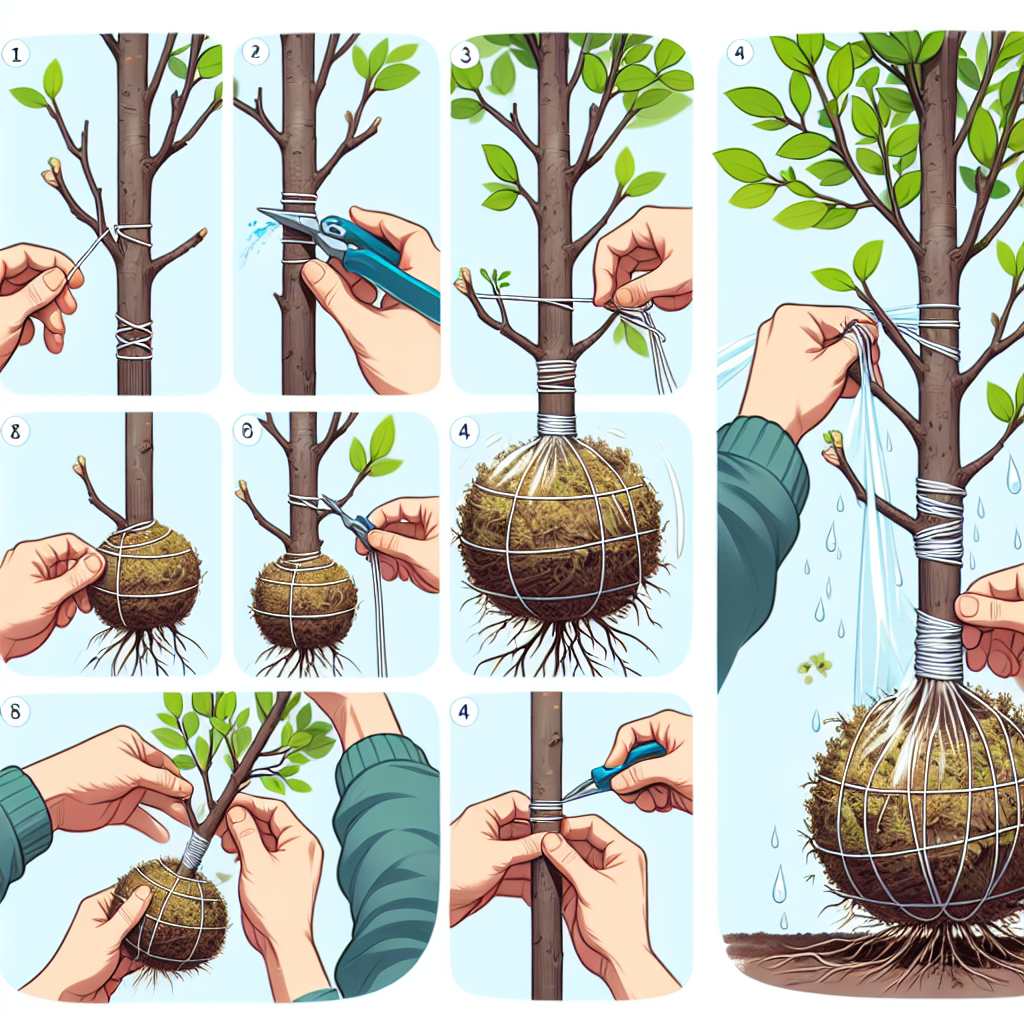
How to root a tree branch without cutting
Understanding the Art of Rooting a Tree Branch
Rooting a tree branch can be a fulfilling endeavor for any gardener or tree enthusiast. Whether you're aiming to propagate a beloved plant or create new growth, understanding how to cultivate roots can save you from the hassle of cuttings. This technique involves promoting a branch to develop a root system while it's still attached to the parent plant. In this guide, we delve into how to root a tree branch without cutting, so you can successfully create new life from your existing trees.
Why Root a Tree Branch?
Tree propagation through rooting has several advantages:
- Cost-effective: Instead of purchasing new plants, you can create them from existing ones.
- Preservation: You can preserve the genetics of a tree that you particularly enjoy.
- Quick Results: Rooting a branch can yield faster results than starting from seeds.
- Strength: New plants grown from a parent tree often have stronger root systems.
Preparing for Rooting
Before starting, gather the necessary tools and materials to ensure a successful rooting process:
- Sharp pruning shears or scissors
- Rooting hormone (optional)
- Moist growing medium (like potting soil or a mix of peat and perlite)
- Plastic bags or clear containers
- Watering can or spray bottle
Steps for Rooting a Tree Branch Without Cutting
Choosing the Right Branch
The success of rooting a tree branch is significantly influenced by the selection of the right branch. Here are some tips:
- Choose healthy branches that are about 6 to 12 inches long and are one year old.
- Look for branches that have a few nodes, which are the points where leaves are attached.
- Avoid any branches affected by disease or pests.
Preparing the Branch
Once you've selected a suitable branch, it's time to prepare it for rooting:
- Gently clean the area around the branch using a moist cloth to remove any dust or debris.
- If necessary, lightly scratch the bark around the bottom of the branch. This will encourage rooting by damaging the bark slightly to promote root growth.
- If you're using rooting hormone, apply it to the scratched areas of the bark. This is optional but can increase your success rate.
Creating the Right Environment
For the branch to successfully root, it needs a conducive environment. Follow these guidelines:
- Choose a pot with drainage holes, and fill it halfway with your chosen growing medium.
- Insert the branch into the medium at a 45-degree angle, ensuring that at least one node is buried.
- Water the medium lightly to keep it moist but not soggy.
- Cover the pot with a plastic bag or clear container to create a humidity dome, which helps prevent moisture loss.
Care and Maintenance
After setting everything up, ensure that you provide care for the branch as it roots. Here are some simple steps to follow:
- Check the moisture levels in the growing medium regularly, ensuring it stays consistently moist.
- Keep the pot in a location that receives indirect sunlight – too much direct sunlight can scorch the branch.
- Remove the plastic cover for short periods every few days to allow fresh air in, then replace it.
Watching for Roots
With proper care, you can expect to see roots developing in approximately a few weeks to a couple of months. Look for these signs:
- New leaf growth, indicating the branch is alive and thriving.
- Resistance when you gently pull on the branch, suggesting that roots have formed.
Transplanting Your Newly Rooted Branch
Once your branch has established roots, it's time to transplant it into a larger pot or directly into the ground:
- Carefully remove the plant from its temporary pot.
- Be gentle to avoid damaging the roots.
- Prepare a larger hole in your garden bed or a larger pot filled with nutritious potting soil.
- Place the rooted branch in its new home and cover it with soil, ensuring the previous level of soil is maintained.
- Water thoroughly to help settle the soil.
Common Challenges and Troubleshooting
Pests and Diseases
As with any gardening endeavor, pests and diseases pose a risk. To mitigate this:
- Regularly inspect the branch for signs of infestations, such as discoloration, wilting, or unusual spots.
- Use organic pest control methods when possible, such as insecticidal soap or neem oil.
- Ensure that the growing medium is not too damp, as this can cause root rot and other fungal diseases.
Improper Moisture Levels
Finding the right balance in moisture is crucial. Refer to these tips:
- If the medium feels dry, give it a gentle watering, but avoid overwatering.
- If the branch wilts or yellow leaves appear, it may be getting too much water.
Conclusion
Rooting a tree branch without cutting can be an enriching experience, not just economically but also emotionally as you nurture new life. By following the outlined steps and being attentive to the branch's needs, you're sure to cultivate a thriving plant that can beautify your outdoor space or indoor garden. Remember that patience is vital in this process; give it the right conditions and care, and soon enough, you’ll witness the beauty of plant propagation in action.
"Gardening is a way of showing that you believe in tomorrow." – Anonymous
So, get started on your journey to root a tree branch without cutting and watch as your garden flourishes!
By Guest, Published on October 18th, 2024